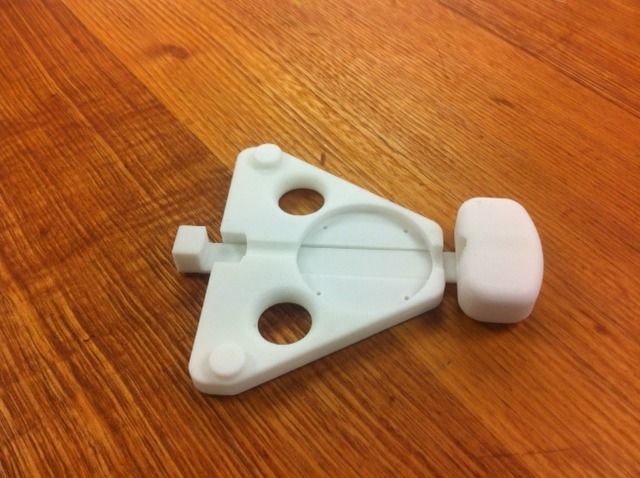
Still waiting on eBay gauges. made 2 so far. one ABS, one PLA.
Another on the way in solid fill, as soon as the students stop using all 3 printers 12 hours a day!
Postby Daniel.messem » Wed Dec 28, 2016 9:57 pm
Postby QuangVuong » Thu Dec 29, 2016 12:23 am
Postby Daniel.messem » Thu Dec 29, 2016 12:29 am
daniel.messem@gmail.comQuangVuong wrote:What is your email? I will send the files through email for now. I want to finalise the files before uploading them to Thingiverse.
Postby Warin » Fri Dec 30, 2016 8:30 am
Postby QuangVuong » Sat Dec 31, 2016 10:15 am
Postby Warin » Sat Dec 31, 2016 1:14 pm
Don't think the costs of the bearings are worth it. Friction coefficient of metal to metal are poor so would not introduce much error, any stiction could be reduce by tapping?QuangVuong wrote:The spoke bearing surfaces are only plastic in this version as I planned to make a version that is fully printable, other than the spring and dial indicator. I definitely would swap the spoke bearing surfaces with some bearings. This will minimise the friction on the spoke which may result in an inaccurate measurement as well as greatly improve the longevity of the tool.
Postby Warin » Sun Jan 01, 2017 2:07 pm
Postby horea » Mon Feb 27, 2017 11:29 pm
Postby QuangVuong » Tue Feb 28, 2017 8:28 pm
Postby catmandu13 » Wed Mar 29, 2017 7:14 am
Postby MattyK » Wed Mar 29, 2017 9:13 am
Postby catmandu13 » Thu Mar 30, 2017 12:13 am
Postby MattyK » Thu Mar 30, 2017 10:47 am
Postby catmandu13 » Fri Mar 31, 2017 12:26 am
Postby MattyK » Fri Mar 31, 2017 11:38 am
Postby cmh » Sat Apr 07, 2018 6:45 am
Postby QuangVuong » Sat Apr 07, 2018 9:04 pm
Postby cip1974 » Tue Aug 25, 2020 7:39 pm
Users browsing this forum: No registered users
The Australian Cycling Forums is a welcoming community where you can ask questions and talk about the type of bikes and cycling topics you like.